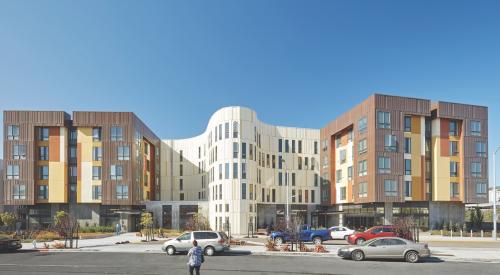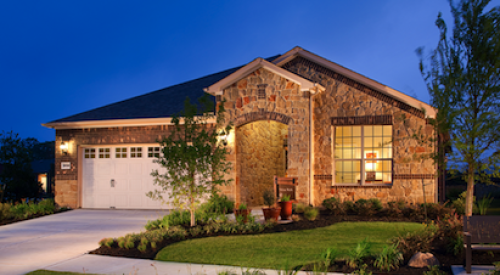We are on the cusp of a major opportunity in the housing market: for-sale retirement housing. Real Estate Consulting just finished a 300+ hour research project on retirement housing, analyzing the demand in all 3,000+ counties in the country and determining the best sales, marketing and product design techniques. This article summarizes some of its findings.
The retirement housing market during the next few years will consist of Pre-Boomers (currently 58 to 67 years old) and Early Boomers (currently 48 to 57 years old). Both generations are incredibly different than the generations before them. While there also are huge demographic, lifestyle and value differences among the 61 million people who belong to these two generations, they have shared some common experiences that have helped differentiate them from prior retirees. By reviewing their shared experiences, we hope to convey what you will need to know - and do - to:
- learn more about the demand in your area
- market your projects to the groups most likely to buy your homes, even if your communities are not age-restricted
- sell more homes by giving your salespeople more insight regarding the life experiences of the individuals walking through your front door.
Selling homes to these two generations will be relatively easy since they have a high propensity to move, and they have more wealth than any generation before them. However, making money will be the challenge because these groups are savvy buyers, they are skeptical of promised amenities (which is why Del Webb and others spend so much money upfront on their communities) and they demand exceptionally high customer service.
Shared Life Experiences
We have segmented this decade's primary retirement housing buyers into two generations:
Pre-Boomers: The Pre-Boomers are the 14.3 million households headed by someone born between 1936 and 1945, which means they are currently 58 to 67 years old. These 24.2 million people also are known as The Lucky Generation because they were too young to serve in World War II and the Korean War and too old to serve in Vietnam. They also entered the job market at the beginning of a 20-year economic boom. They had little competition for jobs, housing and education, unlike the Boomers who followed them. If their purchase rate is the same as the prior generation - and we believe it will be higher - they will buy 3.6 million homes this decade.
This group includes Alan Alda, Burt Reynolds, John Madden, Wilt Chamberlain, John McCain, Mary Tyler Moore, Warren Beatty, Colin Powell, Jack Nicholson, Bill Cosby, Dustin Hoffman, Robert Redford, Peter Jennings, Kenny Rogers, Ted Turner, Tina Turner, Jane Fonda, Jack Nicklaus, Tom Brokaw, Ted Koppel, Chuck Norris, Paul McCartney, Ringo Starr, Raquel Welch, Bobby Knight, Dick Cheney, Pete Rose, and Martha Stewart.
Early Boomers: The Early Boomers are the 21.3 million households (50% more households than the Pre-Boomers) headed by someone born between 1946 and 1955, which means they are currently 48 to 57 years old. These 37.7 million people represent nearly 46% of the 83 million Baby Boomers. They already have redefined music, religion, leisure, work force composition, work force productivity, and American norms and values. They also will redefine retirement housing.
The pre-1951 members of this group include Rod Stewart, Tom Selleck, Pat Riley, Eric Clapton, Steve Martin, Henry Winkler, Goldie Hawn, Bette Midler, Diane Sawyer, Dolly Parton, Liza Minnelli, Donald Trump, George W. Bush, Bill and Hillary Clinton, Sylvester Stallone, Susan Sarandon, Suzanne Somers, Steven Spielberg, Jimmy Buffett, Farrah Fawcett, Billy Crystal, Elton John and David Letterman.
Below is a very brief summary of our analysis of the "Generational Markers" of this decade's retirees, including the political, social, economic and cultural conditions that helped shape who they have become. As you review this list, notice how the same historical events probably affected these generations differently, based upon their ages at the time.
|
GENERATIONAL MARKERS
|
|
|
|
|
||
|
Age
|
Pre-Boomers (1936-1945)
|
Early Boomers (1946-1955)
|
| 5 | GI Bill means owned homes, education for dad | Mickey Mouse Club, Disneyland |
| 10 | First television - "I Love Lucy" and "The Honeymooners: | Barbie, GI Joe and 5,000 hours of TV by age 6 |
| 15 | Elvis, The Edsel, 2.7 kids per family | The Beatles, The Rolling Stones |
| 20 | Neil Armstrong, draft protest | College vs. Vietnam vs. Canada |
| 25 | JFK, Ford Mustang | High unemployment, 2.0 kids per family |
| 30 | Record levels of single-family construction | Preppy handbook, 16% rates= continued renting |
| 35 | Jumbo jets, Wall Street Journal | CDs, VCRs, credit card boom, homeownership |
| 40 | Layoffs, 401(k) replaces pensions | Clinton, HIV, time management industry |
| 45 | New home square footage rises | Technology bubble emerges |
| 50 | 1987 stock market crash; S&L / housing crash | Rising homeownership |
| 55 | Technology bubble emerges | Wealthy nest egg reduced |
| 60 | Retiring with Social Security, 401(k), home equity | Will be retiring, but continuing to work |
| 65 | Some returning to work | The first Boomer will turn 65 in 2011, Social Security?? |
Market Segmentation
While the emphasis to date has been on capital-intensive resort-style communities, we anticipate that a growing number of retirement communities will offer fewer amenities and focus on smart home design, cost-effective marketing techniques and a solid return on capital. We have identified 11 major psychographic profiles of retirement buyers, which is just the beginning of the tremendous retirement housing segmentation we expect to see, from cheap boxes in rural areas to luxury condominiums in high rises. Additionally, more communities will adopt new design features that appeal to 30-year-olds as much as 60-year-olds.
Just as Buick management found out that Boomers would not buy their parents' car, we don't expect that a significant number of retirees will be attracted to Sun City. Pulte/Del Webb's first brand targeted at the Pre-Boomers is Anthem, not Sun City, and we expect new Del Webb brands to emerge as the company continues its role as a major trendsetter in retirement housing.
We also believe that this decade's retirees will be more likely to buy a new home than any generation before them. They already have bought a record number of large, move-up homes because the resale market did not satisfy their need. The resale market will not satisfy their demand for retirement housing either. Additionally, they are wealthier than any generation before them, because of the following:
Social Security: They have paid into Social Security all of their working lives, and the Social Security financial problems are not likely to occur for at least another decade (according to the Social Security Administration).
Pensions: Many are old enough to have participated in private and public pensions.
Home Values: They have benefited from the greatest increase in homeownership and housing values in the history of the United States.
Dual incomes: More retirees than ever have had two incomes for most of their careers.
Fewer Children: Current and future retirees had fewer children, which has meant more money to spend on themselves and to save for their retirement.
Inheritances: Their parents were notorious penny-pinchers who grew up in the Great Depression.
Where Will They Go?
Age-restricted destination communities have received the bulk of the attention in our industry, but most of the demand will continue to be in non-age-restricted communities. Consider the following statistics from the 1990s:
- Twenty-four percent of those who turned 65 during the decade bought a home during the decade.
- Approximately 72% of these buyers stayed in their local metropolitan area.
Although the next generation will be different than prior generations, we examined migration patterns in the 1990s to learn more about retirement demand. We compared the number of people aged 60 to 64 in 1990 to the number of people aged 70 to 74 in 2000. These are the same people. Unfortunately, but not unexpectedly, 16% of the population did not survive the decade. We compared the national decline of 16% to the decline in all 3,000+ counties in the country, noting that the standard deviation was +/-13%. This means that two-thirds of the counties had between a 3% decline and a 29% decline in population. Only three states experienced growth (Florida, Arizona and Nevada), and no states declined by more than 29%. Here are four categories of areas that are particularly attractive to retirees:
- Destinations: While Arizona, Nevada and Florida will continue to be the fastest-growing retirement states in the country, the Pacific Northwest, Rocky Mountain region, Texas Hill Country area, Ozarks, Carolinas and New England also will attract more than their fair share of retirees.
- The Site of their Youth: Many retirees return to the site of their youth, especially college and military towns where housing is affordable and the climate is attractive. Places such as Austin, Texas, and Colorado Springs, Colo., are popular destinations.
- Urban Areas: Most people prefer to live close to their family and friends, and the percentage that stays close to home is likely to increase in the coming decade. More people who reach retirement age will stay in their current area because future retirees:
- want to continue working
- will have more money than any prior generation
- will take advantage of the $500,000 capital gain tax exclusion by buying a much smaller home or condo in their existing area.
- Areas Adjacent to Urban Areas: Many retirement destinations are within a few hours of a major metropolitan area, allowing retirees to stay close to their family and friends. For example, areas just outside San Francisco, Los Angeles, Washington, Dallas and Denver are popular retirement destinations.
The quality and extent of the design features noted in these graphics will vary significantly by the psychographic market that you are targeting.
Conclusions
The home building industry has ridden the wave of Boomer housing demand, from entry-level homes in the 1970s and 1980s to move-up homes in the 1980s and 1990s, by designing homes and communities that are far better than those built in prior decades. The retirement housing boom, which won't decline until the last Baby Boomer turns 65 in the year 2029, will be where we make a lot of money during the next 26 years. We are looking forward to it.












